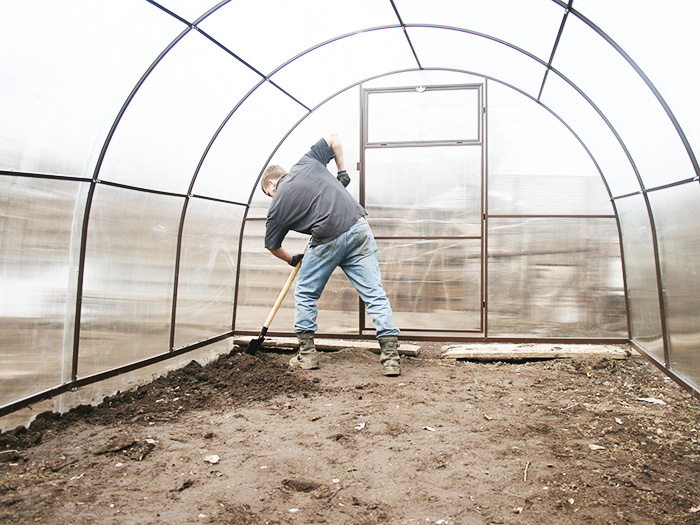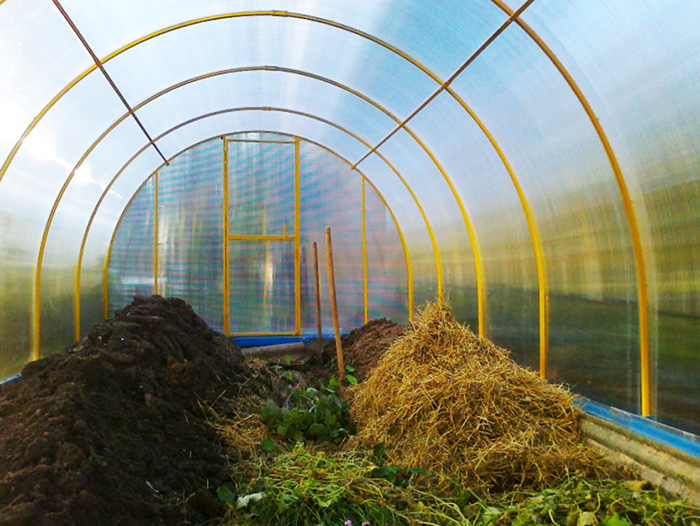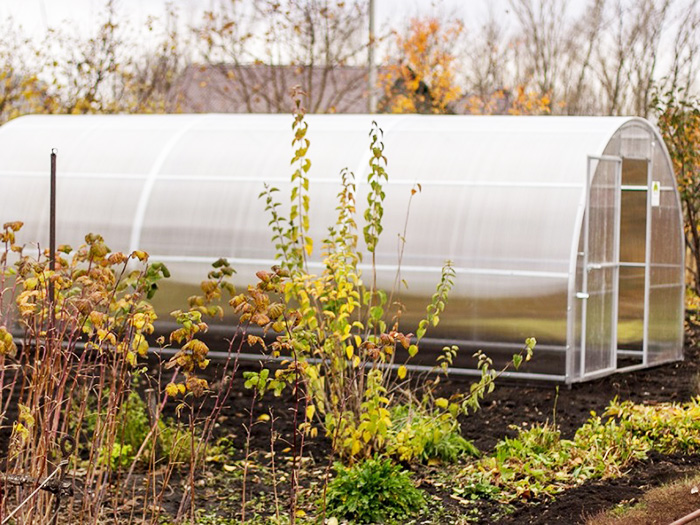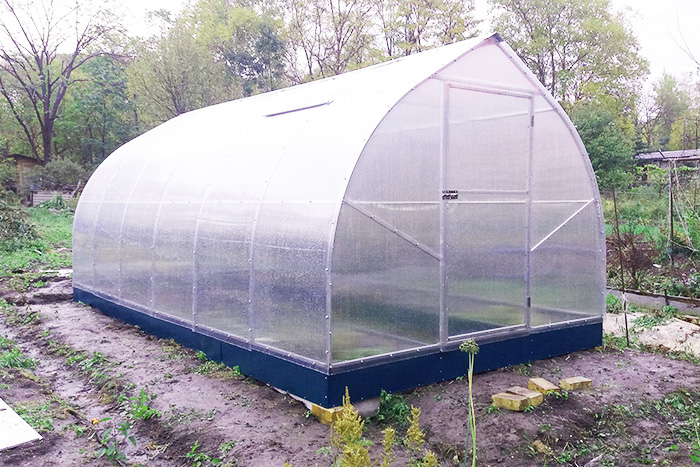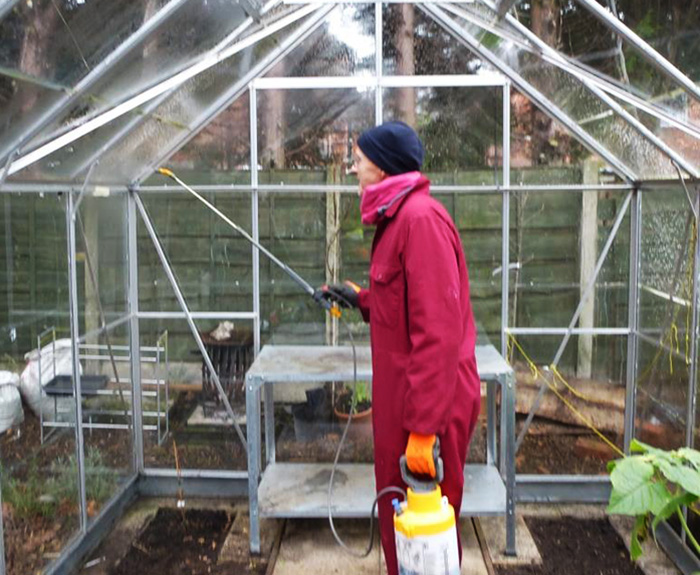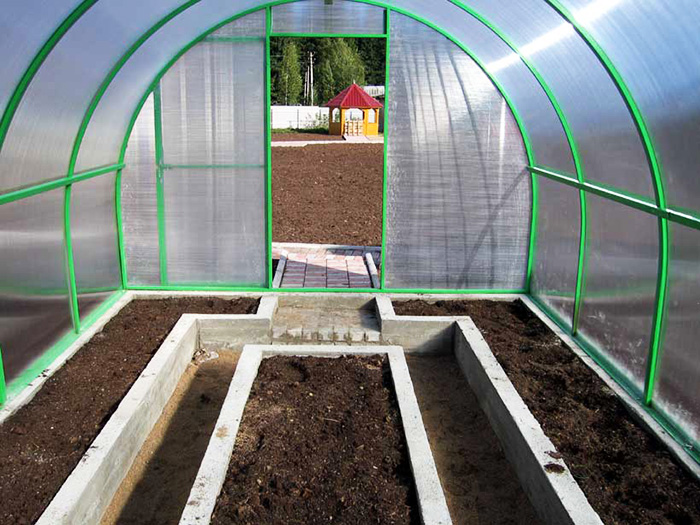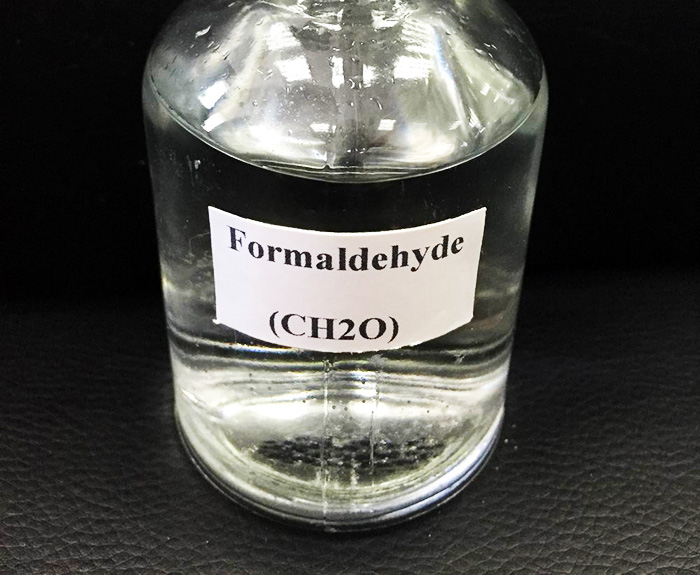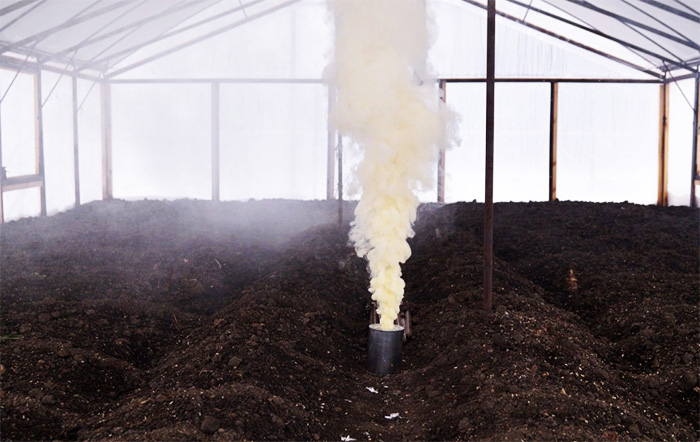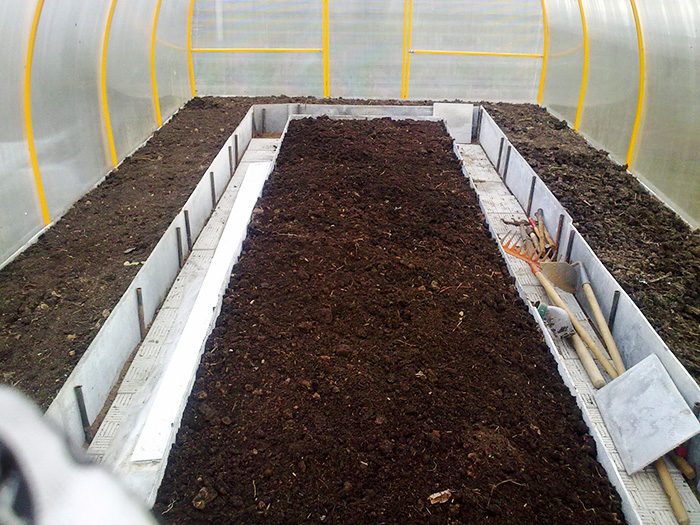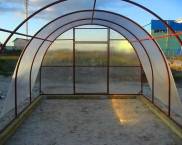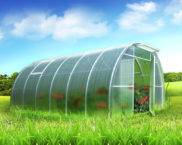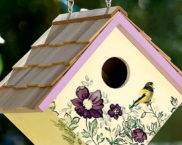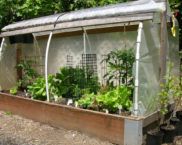Greenhouse processing in autumn: how to take care of the future harvest now
The closed method of growing vegetable products is very popular in our latitudes, so it makes sense to handle the greenhouse with care. Conditions for plants there are good, but the specifics of the premises and its microclimate contribute to the emergence of all sorts of problems, including diseases. How to avoid all this, the editors of homemaster.techinfolux.com/en/ will tell you on their pages, because today we will find out what the processing of the greenhouse in the fall includes, how it is carried out.
The content of the article
Why is it so important to carry out the autumn processing of the greenhouse
Compliance of greenhouse conditions with sanitary standards contributes to the creation of the most suitable favorite Zelentsi microclimate. And these conditions are such that we are talking about an increased level of humidity and temperature.
The result of the creation of such a favorable mini-world for plants leads to the fact that pathogenic flora develops just as willingly in the room. On the walls and in the soil of greenhouses, infectious agents, mold and fungal spores, pathogens live with pleasure.
After the end of the season, you should get rid of such “wonderful” intruders, because next spring will awaken all this filthy brotherhood. Then they will continue their development on young plants, leading to a slowdown in their growth and death.
For example, phytophthora spores are very tenacious and can survive for up to 5 years, waiting for favorable conditions. And as soon as such conditions appear, it becomes very problematic to grow, for example, healthy tomatoes.
In order to exclude the growth of pathogenic microflora, the treatment of the room itself and the disinfection of the soil are required. Even if no diseases were detected during the season, it is far from the fact that they have not settled and will not harm next year.
Related article:
DIY polycarbonate greenhouse. Drawings, types of structures, step-by-step construction, advice and recommendations of specialists and much more in a separate publication of our portal.
Autumn is a favorable time for greenhouse processing
Autumn is the optimal time to process the greenhouse, which is vital for plants. So, what and how can be processed in the fall:
- wash the outer surfaces with soapy water;
- remove the surrounding area from dry leaves and plants;
- to process internal structures with special means;
- dig up the soil and add disinfectants;
- fumigate the room.
The main stages of autumn processing
All the work is done in stages, it is not necessary to do everything in one day. The main goal is not to plow yourself to exhaustion, but to perform the actions necessary for the future harvest.
- First you need to remove all plant residues. Various bacteria readily hibernate in them. If the plant has been diseased, the risk becomes close to 100%. If the greens were healthy, they are sent to compost.
- Now supports and straps are removed: this is also a place where pests can settle. Perennial supports are taken out and processed, drying in the sun, seasonal ones are better to burn or take out of the garden. Stationary supports are machined on site at the same time as the frame.
- It is possible to flush the inner walls of the greenhouse. Wet cleaning will wash away dirt, viruses, spores and fungi, remnants of dressings and other products.
Important! If the walls are made of polycarbonate, then you should remember that the material is not resistant to scratches. It is better to wash the walls with a microfiber cloth.
Related article:
Do-it-yourself greenhouse from a profile pipe. In a separate review, detailed instructions for the design and construction of a structure from a shaped pipe are provided with photo examples.
Wall treatment
Sponges and rags are used to wash the greenhouse walls. Laundry soap is diluted in a bucket of warm water, the solution is applied to the surface, washing the joints. It is better not to rinse off the foam immediately, but leave it for 10 minutes.
If possible, it is better to flush the foam with pressure from a hose, helping with your hands. After the inside has become clean, the outer surfaces are washed.
If the greenhouse is not on a metal frame, then the room should be fumigated with sulfur. The substance must be mixed with kerosene and spread along the central line of the building on iron sheets. From the side of the exit, the train is set on fire and leaves, closing the door behind them. The result is expected for 5 days, without opening either the door or the vents.
Attention! During the processing of the premises, be sure to work in a respirator and gloves.
Now you can open everything wide open and ventilate. Sulfur helps to kill mold, fungi and all kinds of pests.
If the frame is metal, then sulfur fumigation will promote corrosion. Therefore, it is better to use not sulfur, but bleach. For 10 liters of water, 400 g of bleach will be needed, which dissolves and infuses for 4 hours. The sprayer is taken and treatment begins. You can open and ventilate the greenhouse in two days.
Related article:
Greenhouse Butterfly. The device, design and operation features, comparison with the Breadbasket, diagrams and recommendations for building with your own hands, reviews of summer residents on the practice of using a greenhouse are in our publication.
Tillage
In case of severe soil contamination, you should not be lazy and remove the entire top layer of the earth. This is about 7-10 cm. We will have to take out the soil outside the territory of the site. If possible, it would be good to disinfect it.
Moderately diseased soil is treated with chemicals. The soil does not need digging at the time of processing, if it is a question of treating pathogenic bacteria.When insects are recognized as pests, you have to work with a shovel: so, they will not have a chance to get deep during the winter cold. During the digging, you need to add fertilizers, chemicals, and copper, which will inhibit the development of fungi.
Frame processing
The frame is examined from all sides: right now it is possible to repair what has broken down over the summer, as well as remove the corrosion that has appeared. Rusty places need to be cleaned, dried and painted over.
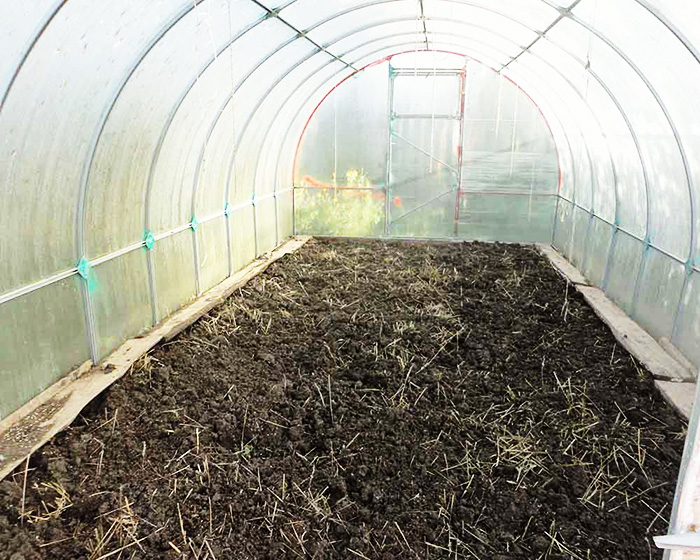
The frame and all metal elements can be doused with boiling water, cleaned with a brush
PHOTO: grounde.ru
The frame can also be washed with a strong solution of laundry soap, but you should not drop the soapy water into the soil, the acidity level is not good.
How greenhouses are treated in autumn
There are a number of products that can help cleanse the soil from pests and pathogenic microflora. In places with a solid infection, formalin can be used: it is sprayed at the rate of 10 liters of solution per 1 m². To prepare it, take 250 ml of 40% formalin and dilute it in water.
After everything is processed, you need to cover the soil with a film for 2-3 days. Then the film is removed, the soil is dug up, but the greenhouse needs to be thoroughly ventilated.
Attention! After formalin treatment, the soil needs beneficial bacteria to be introduced into it.
The soil is treated with a Bordeaux mixture: slaked lime and copper sulfate.
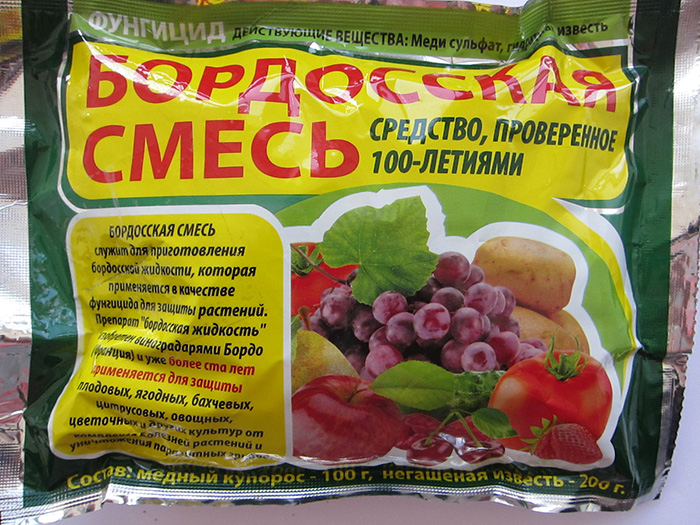
You can buy ready-made packaging and dilute both packages from it in accordance with the instructions
PHOTO: prom.ua
The components are diluted strictly separately, and the slaked lime is poured in a thin stream into a solution of copper sulfate.
Fungicide TMTD is not phytotoxic, it is presented in the form of a dry powder, which should be poured onto the soil surface, hardened and spilled with a pink solution of potassium permanganate. As a result, peronosporosis, mold, fusarium and phomosis will recede.
The inner surface of the greenhouse can also be treated with formalin, copper sulfate and Bordeaux mixture.
Related article:
Greenhouses and greenhouses made of polycarbonate: sizes, prices, advantages, disadvantages, the choice of a suitable place on the land and the correct wording of the search criteria; materials suitable for creating a load-bearing frame and sheathing; an overview of current market offers, finished products of specialized manufacturers - read the publication.
Tips from experienced gardeners for processing a greenhouse in the fall
Let's listen to some practical advice from experienced gardeners:
- when deep autumn comes, it is better to leave all the windows and doors open for a while: the frosty air will kill accidentally surviving pests. In addition, the temperature inside the room will be equal to the outside, and this will exclude the appearance of ice and snow cannot damage the roof of the building;
- if the winters are snowy, then it is better to strengthen the greenhouse with props;
- it is better to make the supports for the roof T-shaped, this will protect the roof during heavy snowfalls;
- before using any disinfectant, you should study how it affects the soil;
- do not forget to apply fertilizers, because the plants pull everything out of the soil in one season!
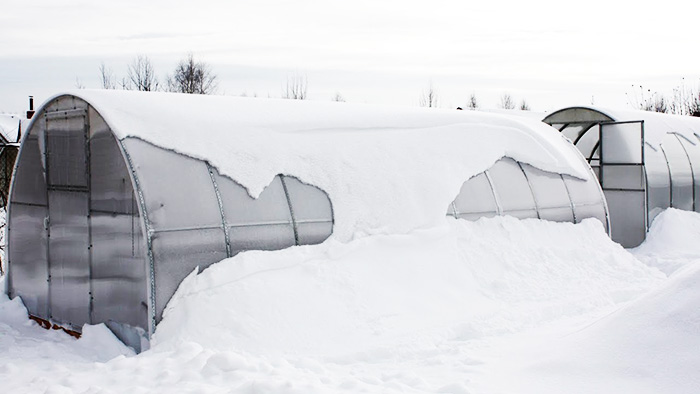
Experienced gardeners recommend to clean the snow from the roof in winter, and bring it inside the ridges closer to spring
PHOTO: i.ytimg.com
Fertilizing the greenhouse: doing it in the fall
Fertilizing before winter will help prepare the soil for the next planting season. In the fall, organic matter is introduced in the form of peat, manure, sawdust, compost. To understand what should be added, clarify the acidity of the soil.
In the fall, add superphosphate, potassium. Wood ash contains many trace elements. During the winter period, the soil will improve due to the introduction of such additives, so this important point should not be neglected.
Related article:
DIY greenhouse made of scrap materials. Structural features, the use of various materials to create a reliable load-bearing frame and high-quality cladding, step-by-step installation instructions with the rules for choosing a suitable place on the land are in our publication.
Video: greenhouse processing in autumn
Successful and effective work in your favorite greenhouse!



